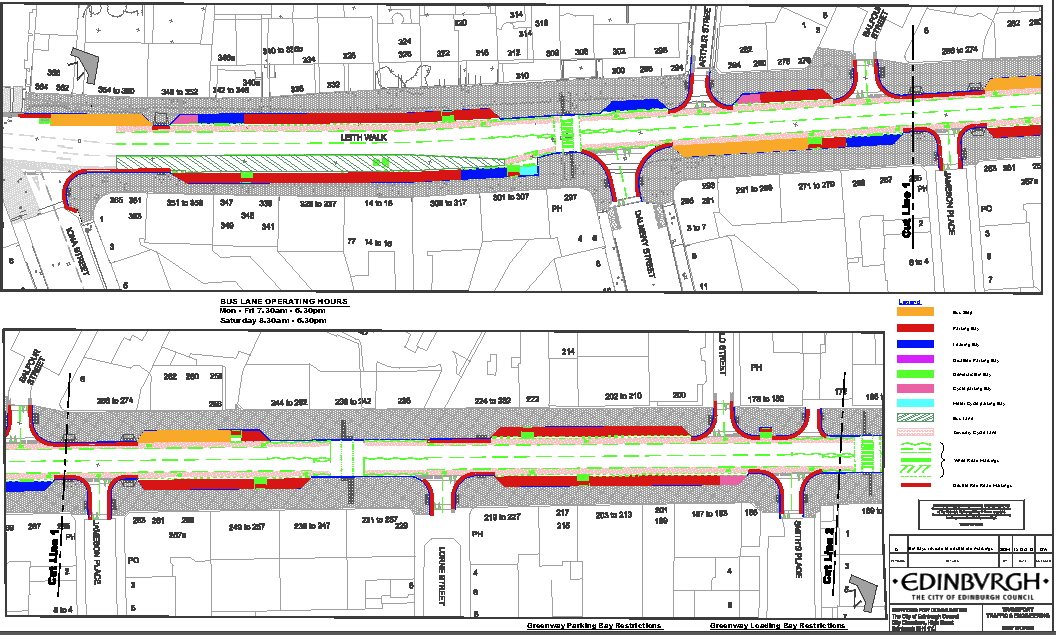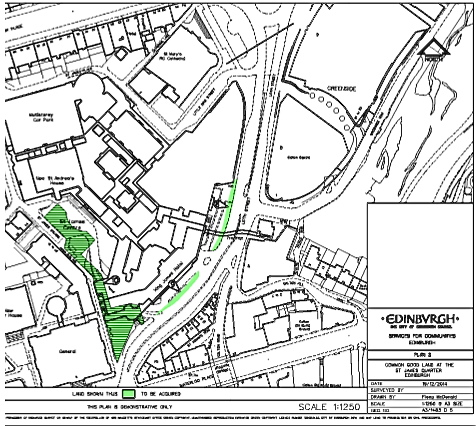
A Report to go before the Finance and Resources Committee next week sheds interesting light on the disposal of Council-owned and inalienable Common Good land to the developer of the St James Quarter.
The Report (dated 15 January and attached as a pdf below) recommends delegating authority for negotiating these deals to CEC’s Director of Services for Communities (the current Acting Director is John Bury), in consultation with the Head of Legal, Risk and Compliance.
An independent consultant – DTZ Chartered Surveyors – would value the land to ensure a realistic price is obtained.
CEC proposes to sell plots 1–7 (marked blue in the plan below), and to obtain permission for the sale of Common Good land (marked red) from the Court of Session once a deal has been struck.

Confusingly, the developer is referred to in the Report not as TIAA Henderson Real Estate (THRE) but as St James Edinburgh Ltd (SJEL).
Barring unforeseen delays, money would be payable by SJEL to CEC in year 2016/17.

CEC consulted the Edinburgh World Heritage Trust and the Cockburn Association on the sale of Common Good Land. EWHT made no comment. CA raised no objection so long as a fair price is paid for it.
Spurtle agrees with CA’s point. None of these plots is a particular fragant or treasured spot beloved by locals, but they are clearly of value and we want our pound of flesh for them.
CEC proposes to acquire three areas (marked green below) from the developer. Area 10 – at the approaches to the proposed hotel on Leith Street – would be leased back to the developer for 175 years at a nominal rent of £1 per year.
These green areas form part of the Growth Acceleration Model (by which CEC can access Scottish Government funds), and CEC acquiring them is one of the conditions for that financial lubrication going ahead.

Spurtle has no particular axe to grind about these arrangements, although our understanding of the GAM is admittedly sketchy and we find ourselves irritated at the Council's interpretation of the word 'inalienable'.
Realistically, the Report details what appear to be the necessary and inevitable adjustments one would expect to see as part of preparing such a major development. The likely benefits far outweigh the likely risks.
Our main interest here is simply to hold the paperwork up for more public scrutiny in Broughton than it would probably receive otherwise in the recesses of the Council website. We thank the reader who today alerted us to its existence.
Got a view? Tell us at spurtle@hotmail.co.uk and @theSpurtle and Facebook